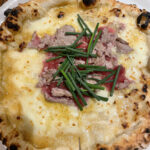Japan Eats, Part II: Michelin-Starred Koke
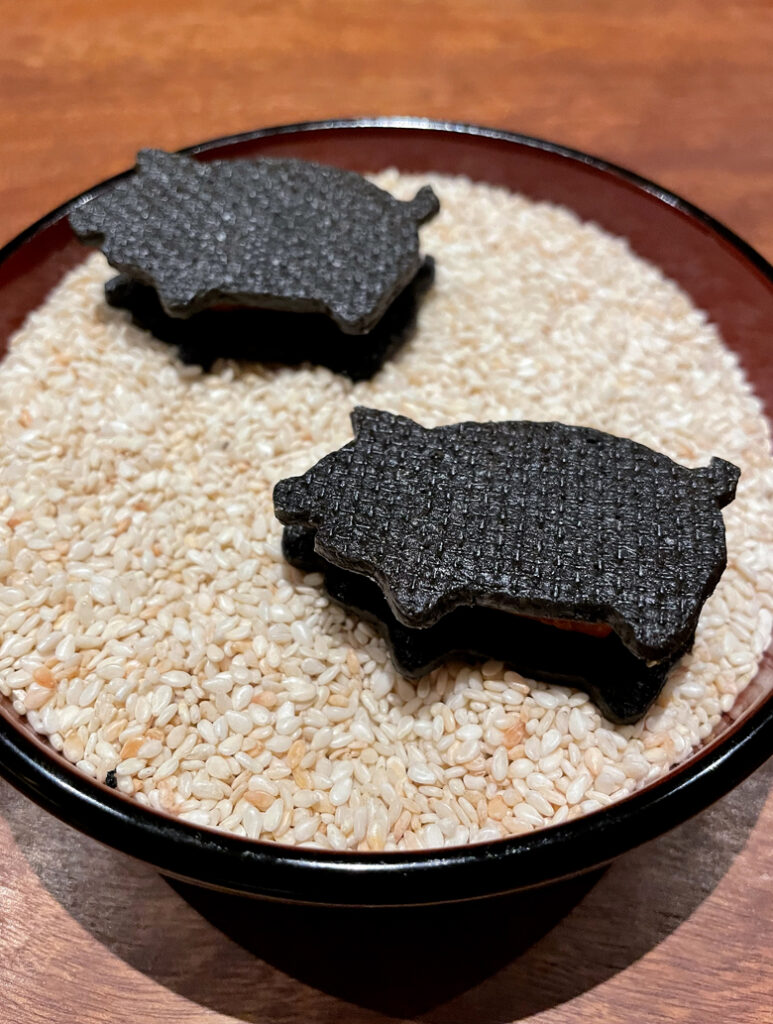
Kyoto, JAPAN — One can eat exceedingly well for little in Japan, and goodness knows that my husband and I did. However, we decided to splurge for one dinner during our recent two-week trip to Japan, and that was to Michelin-starred Koke in Kyoto.
Japan is a dichotomy, where both the ancient and the futuristic are revered. So, when it came to picking a kaiseki restaurant, I chose one that breaks from tradition, one that blends Japanese and Spanish sensibilities in surprising ways.
It serves a 13-course tasting menu with a few of the courses composed of several small bites. You can opt for a regular wine pairing (a total of 700ml) or a small-sized pairing (350ml). The latter is what my husband and I chose.
For all food and drink for the two of us, we paid a grand total of $515 U.S., which is not too bad when you consider that in the Bay Area, many fine-dining tasting menus are easily more than $300 per person for the food alone without gratuity.
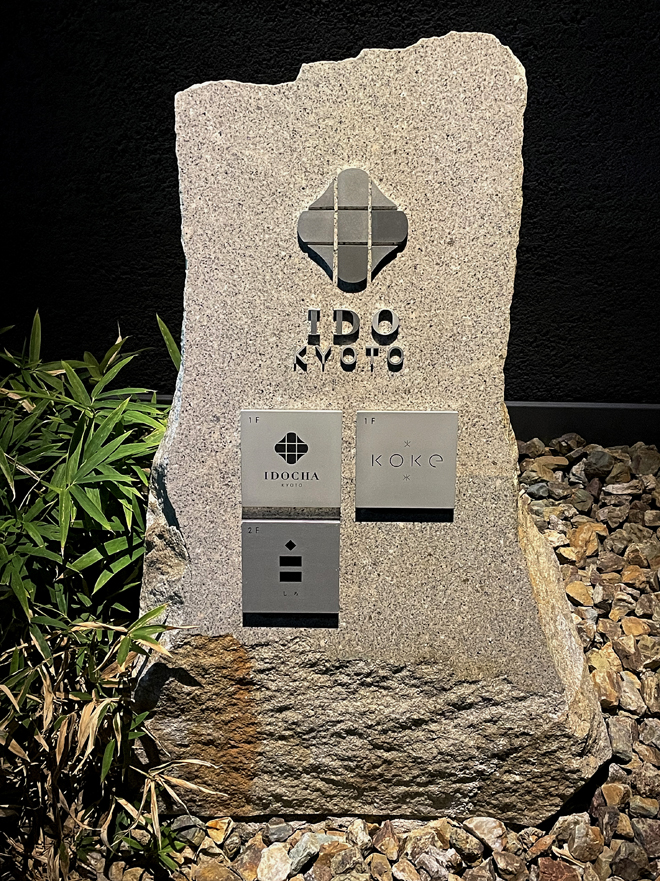

The restaurant hides behind a wall. On the other side, you’ll find a serene Japanese-style courtyard with a floor-to-ceiling window at one end that has a view into the restaurant’s dining room and kitchen. Koke is the Japanese word for “moss” and you’ll spot patches of it in the courtyard. It’s also a symbol of renewal, resilience, and interconnectedness.
There are two tables in the dining room, as well as seats at a long wood-grained counter that fronts the open kitchen. With light wood throughout and a minimalist look, it’s a relaxing environment.


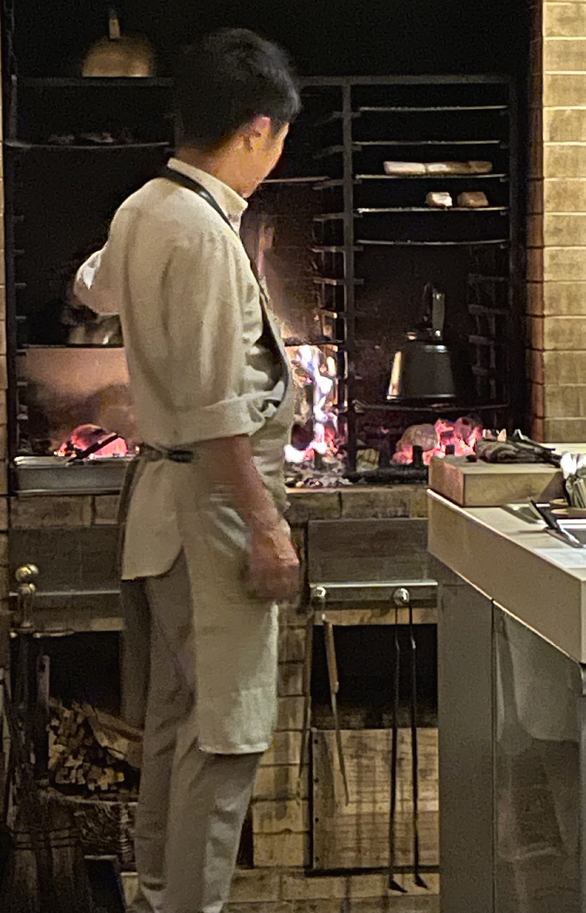
There is only one seating per night, which means you can stay as long as you like. On the Friday night that we dined, we were one of 10 patrons overseen by a staff of 6 kitchen staff and servers. You’ll notice there are no designated dishwashers. Instead, from time to time, you’ll catch your server or sommelier discreetly drying wine glasses or plateware when they’re not attending to diners.
Although I know fewer than a handful of words in Japanese, and English is not the first language of the staff members, most of them speak some English, and are more than happy to try to explain dishes to you.
Chef-Owner Yusaku Nakamura likes to play with the themes of “fire” and “water.” Indeed, there’s a roaring open-flame hearth in the corner of the kitchen that’s used for some of the cooking.
If you look closely at one end of the kitchen counter, you’ll spot a well built into it that can draw water from a natural spring on the property.
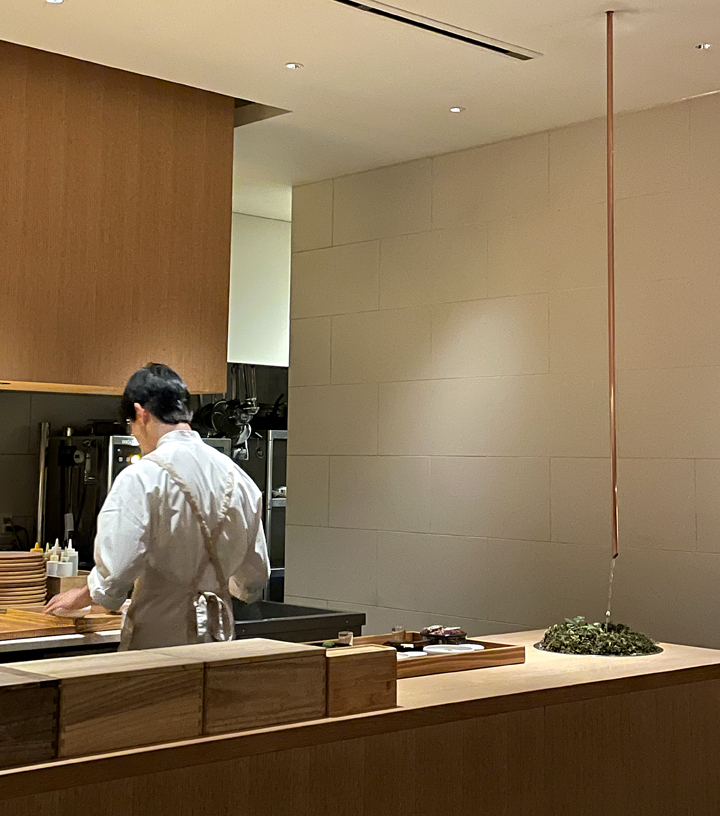
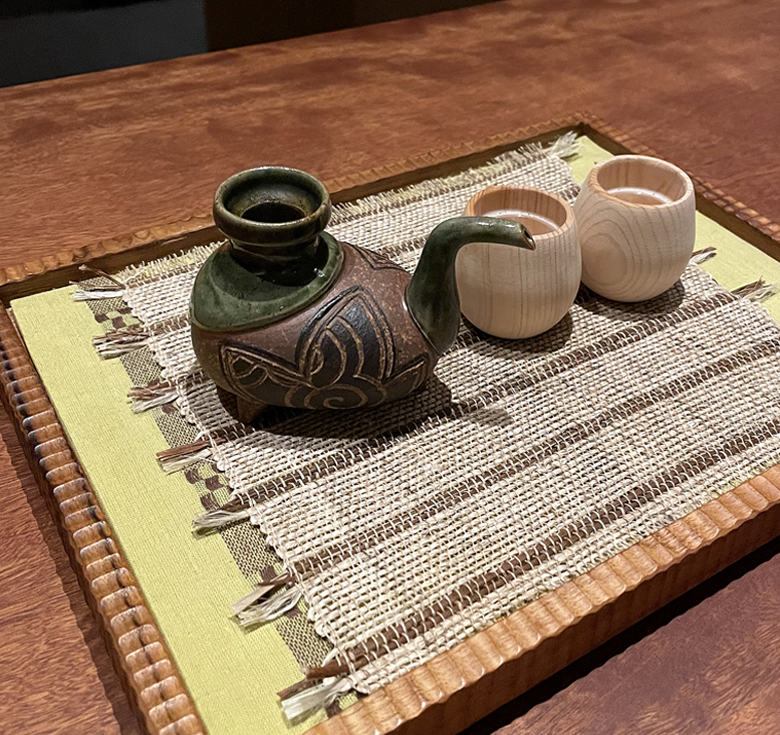
It is that water that makes up your first taste at Koke. Warm pork broth made with that spring water is served in a ceramic cup that’s nourishing and welcoming as can be.
Then comes thin, delicate, and crisp pineapple and orange discs sandwiching tangy goat cheese, plus a teeny tart filled with fermented tofu cream and floss-like dried pork skin with a salty-savory taste that my husband gleefully said reminded him of his childhood favorite Chicken In A Biskit crackers.
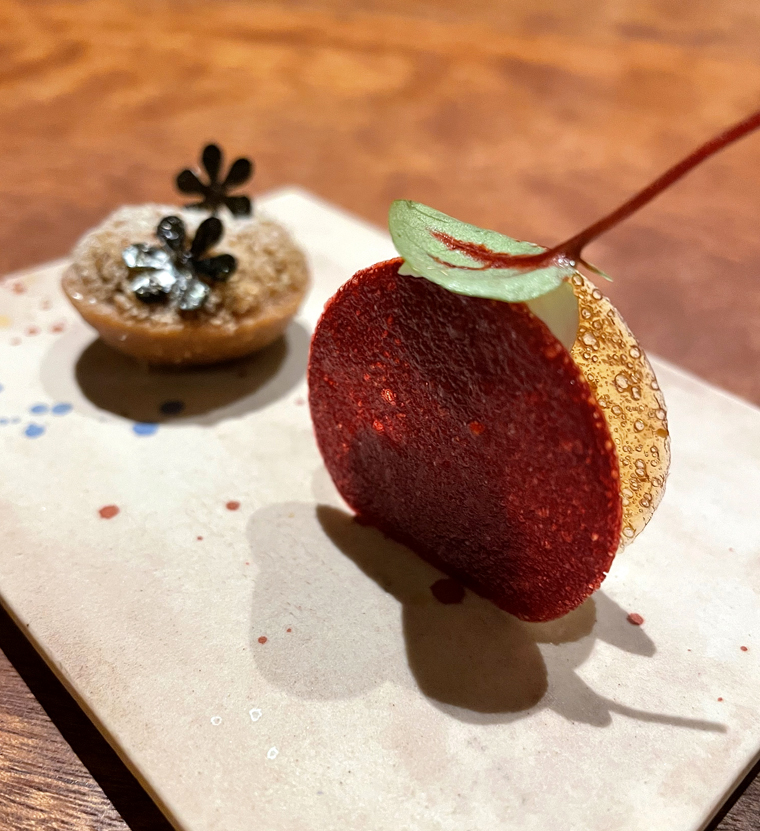
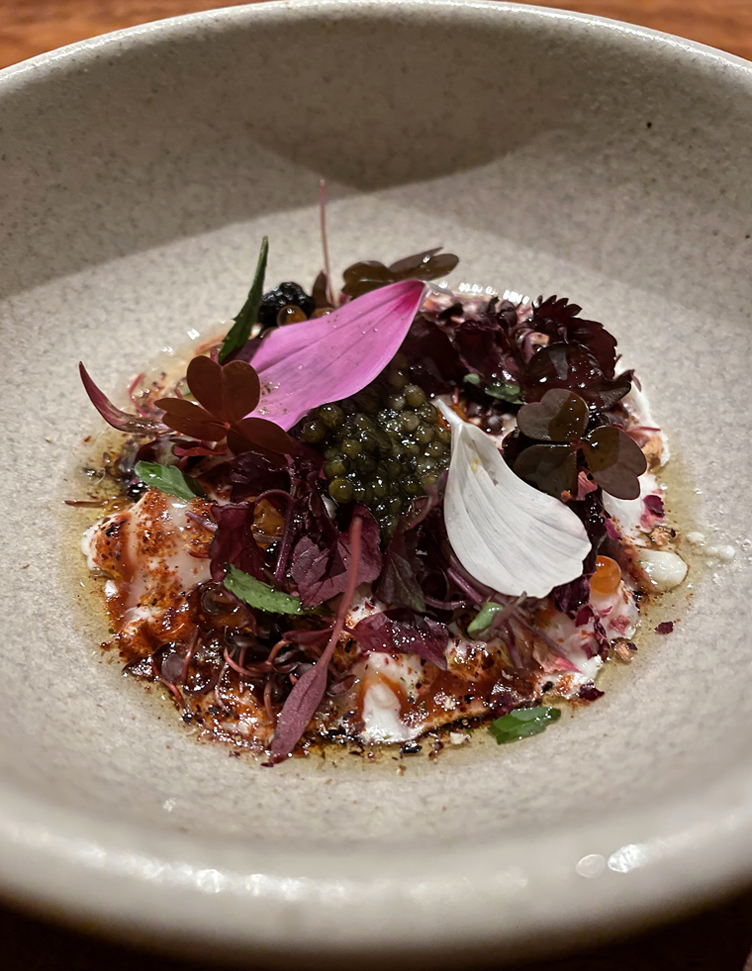
Next came what was probably my favorite dish of the night: an uncanny combination of plump, barely cooked spot prawns with coconut milk, caviar, and chewy, dried blueberries of all things. It was the garden meets the sea. It had a lot going on — salty, umami, floral, and fruity sweet notes that somehow were distinct yet came together in harmony.
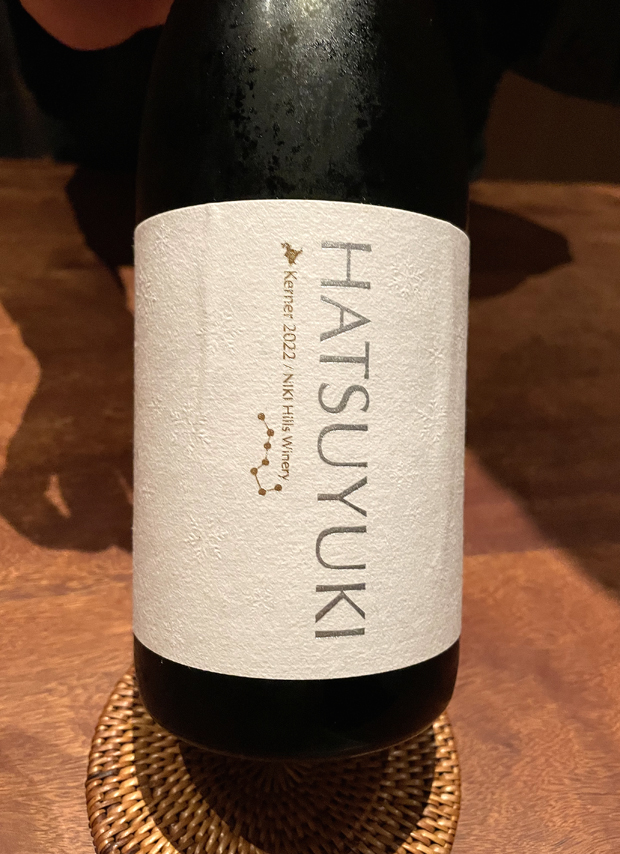
To go with the next bites, a 2022 Nikki Hills Winery Hatsuyuki white wine from Hokkaido was poured. Made with German Kerner grapes, it had a lovely salinity to it. So much so, that upon the first sip, I immediately thought of oysters.
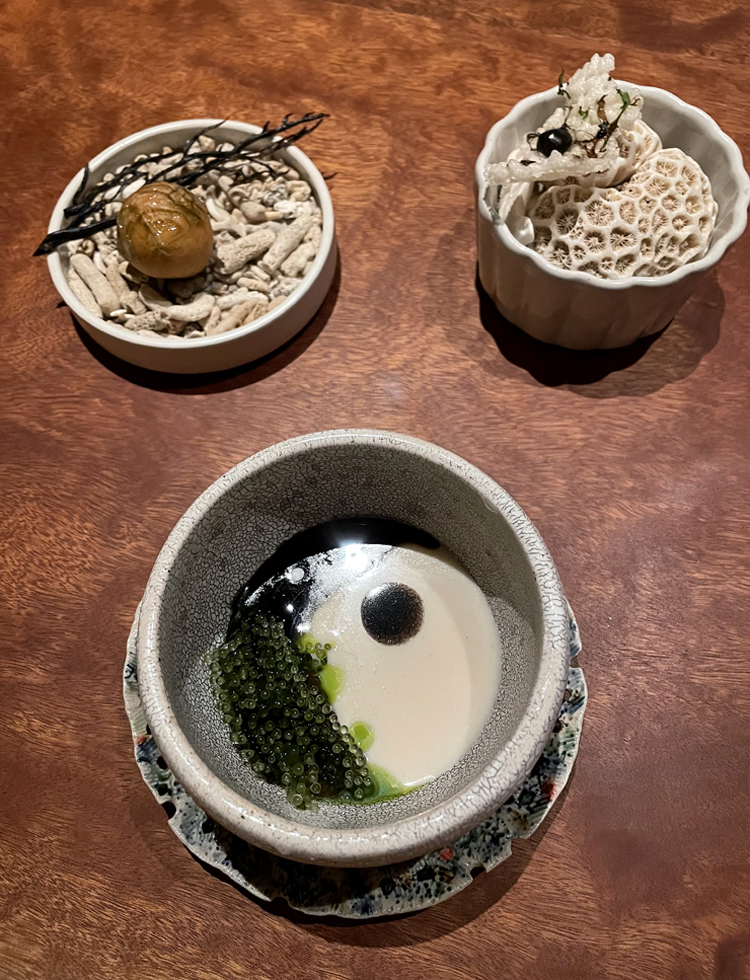
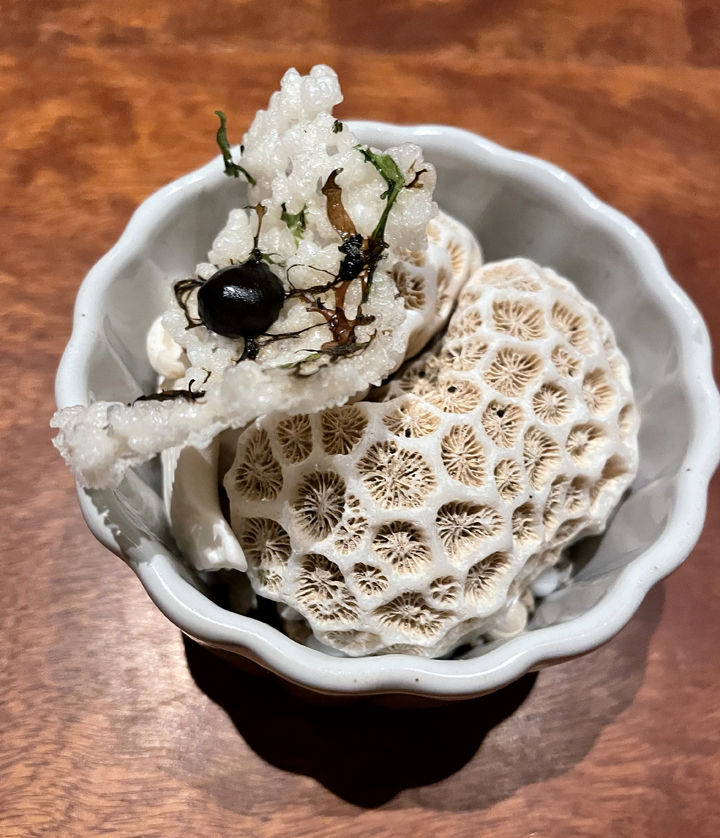
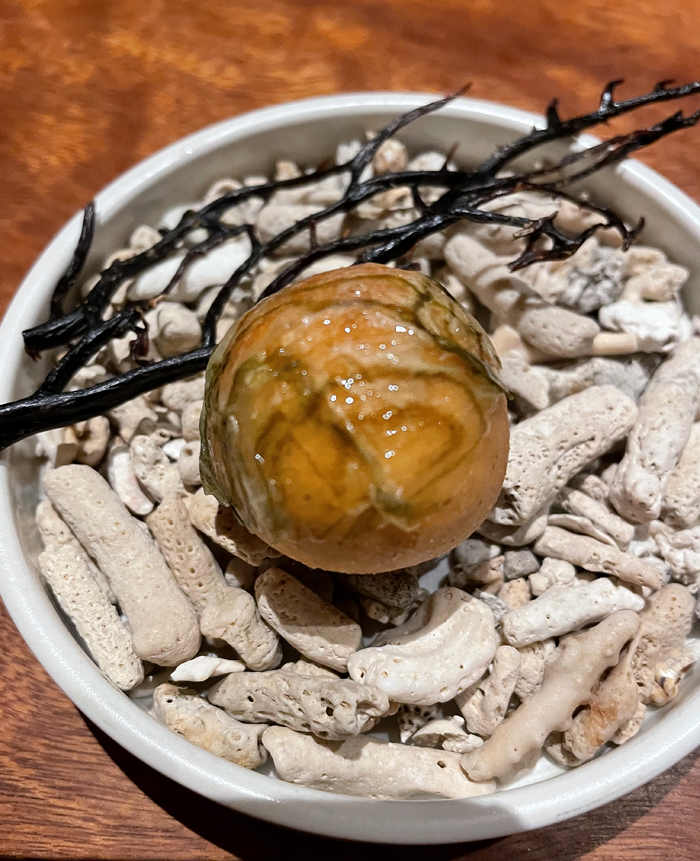
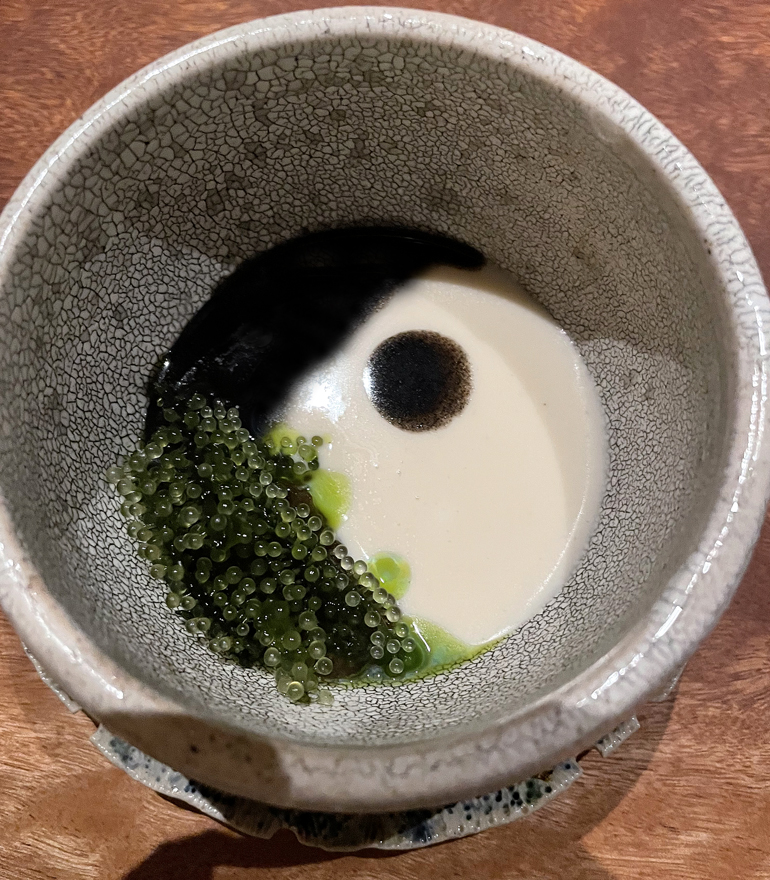
There weren’t any oysters that night, but instead a dramatic trio of seaweed-related noshes. First up, a cold white miso soup done up with an artsy yin-yang design with the black part made from kombu. Crunchy sea grapes added contrasting color and texture to this panna cotta-like dish.
Second, a tiny crispy rice cracker draped with seaweed. And third, a fried pork and kombu nugget that when bitten squirted pork juices deliciously.
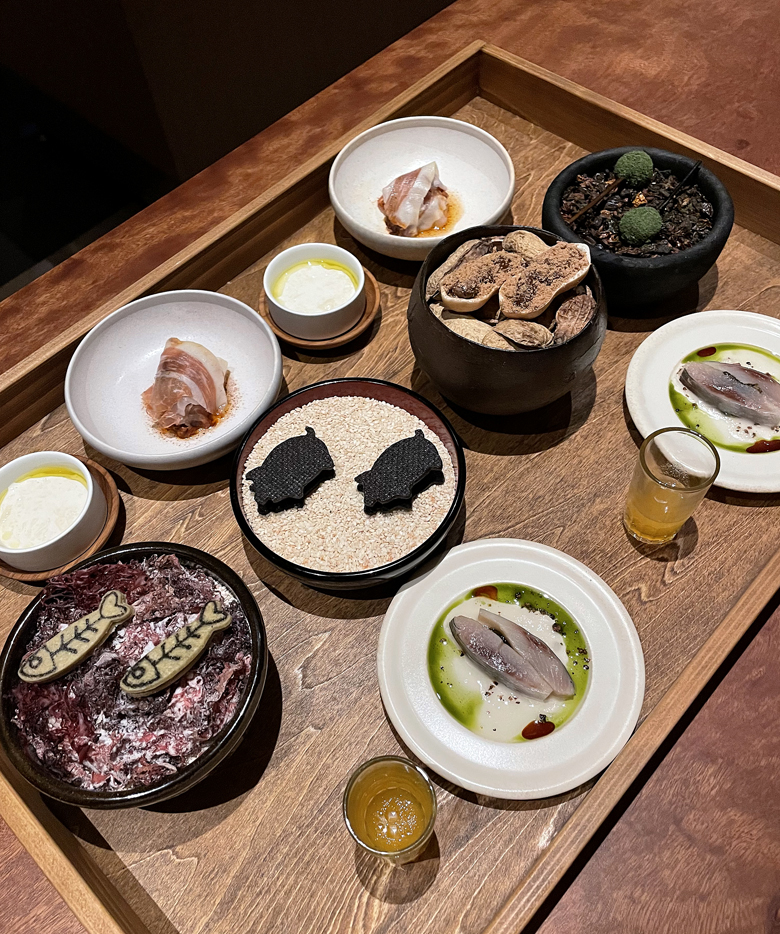
Next came a series of tapas: gazpacho that was the essence of sweet, tangy tomato personified with a drizzle of good olive oil; buttery tasting, paper-thin jamon slices; a Japanese cake with roasted peanuts and brown sugar miso cream cleverly served in an edible peanut shell; herring wakame finished with green tea oil; silky soy milk skin that had the texture of heavy cream finished with olive oil; squid-ink cookies playfully shaped like pigs that were filled with spicy chorizo and tasted like a mini charcuterie board; spears of bitter melon covered in dried tomato that burst with juice like grapes; and cute kombu crackers made to look like anchovies, though lacking the punchy taste of the salty, briny fish that I was expecting.
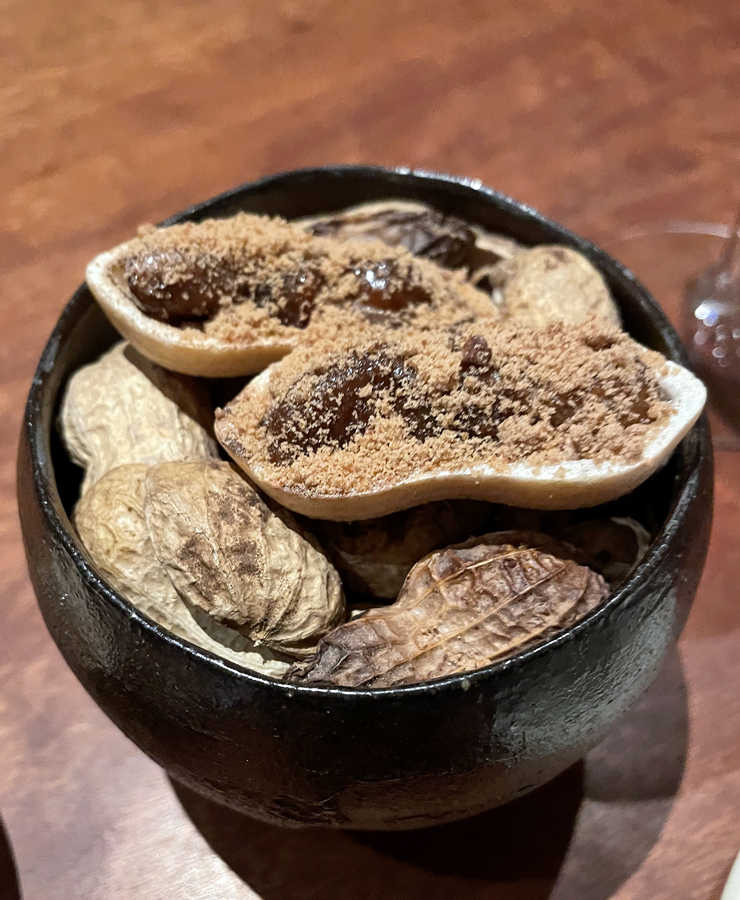
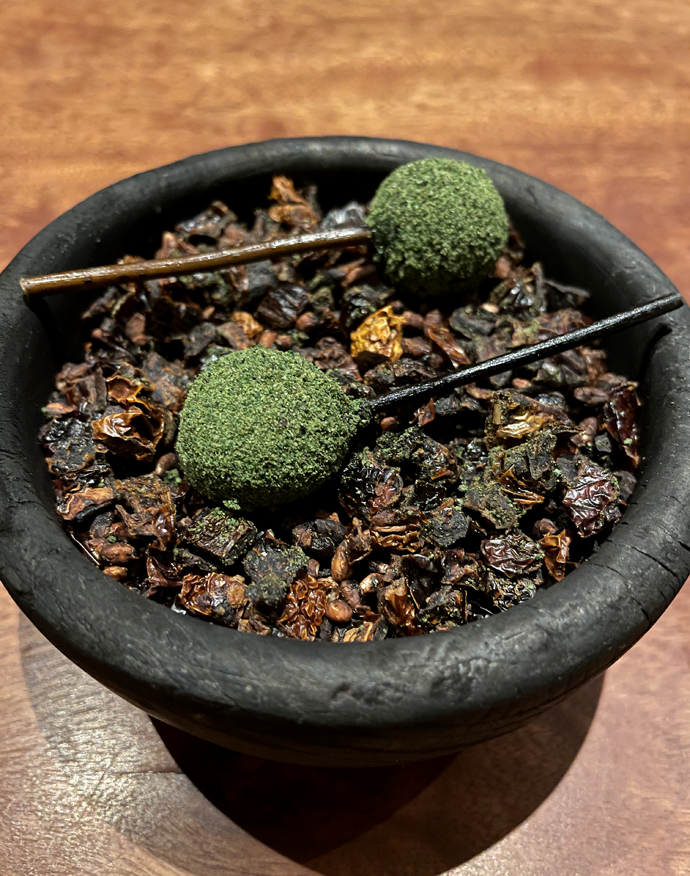
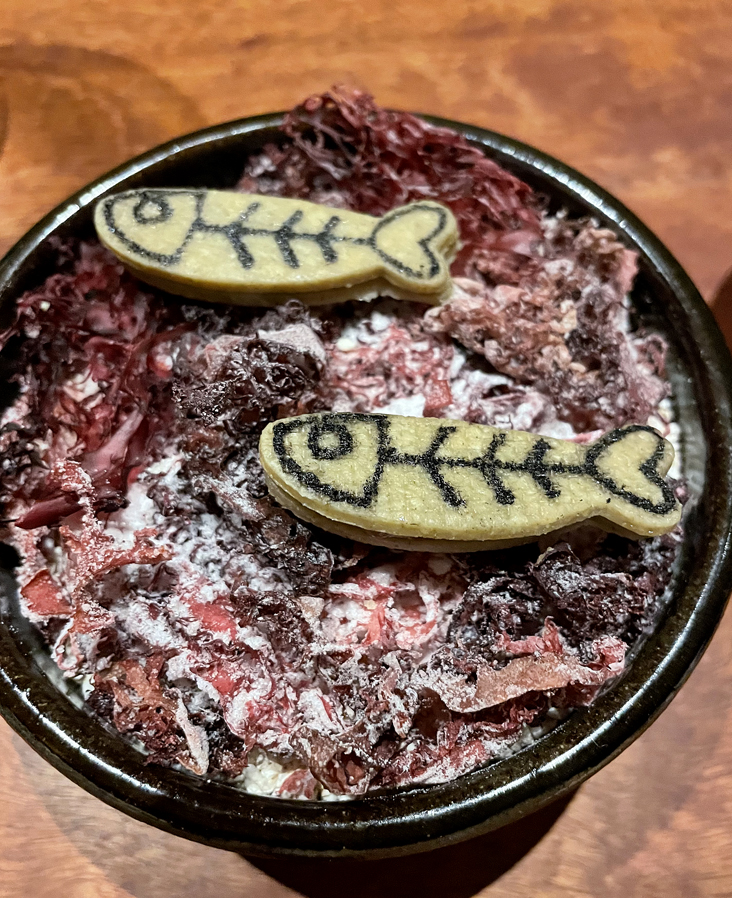
Two spheres arrived on a pedestal: One was sweet with the taste of Okinawan brown sugar. The other was a combination of cocoa butter, pork, black beans, and root beer, like a chilled chocolate truffle with a center of liquid pork fat that had a touch of vanilla.
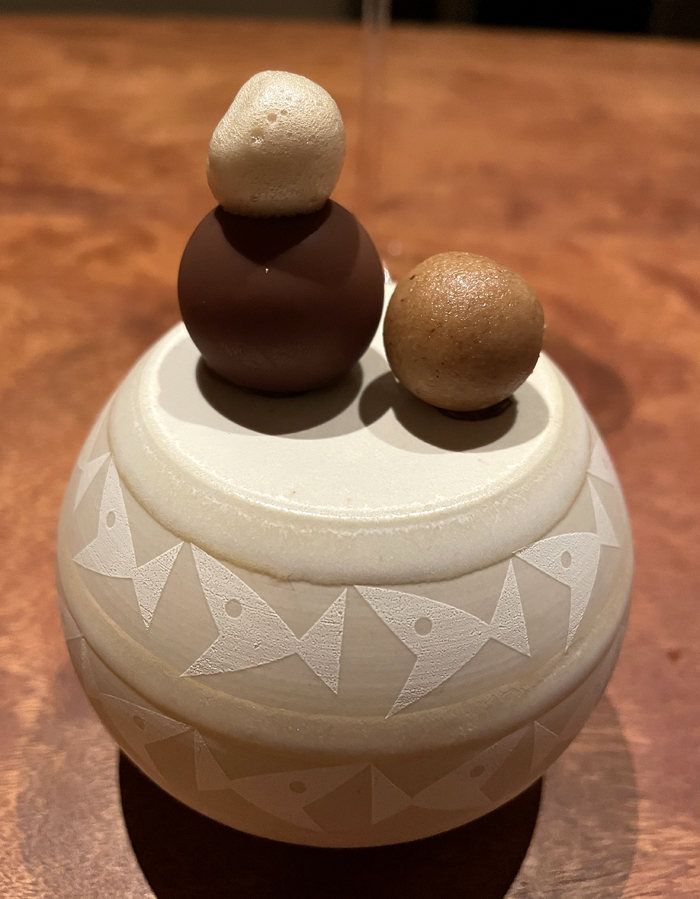
Warm toasty bread arrived after that, denser than the classic Japanese milk bread, and leaning more Italian with a rich finish of olive oil. With it came another Hokkaido wine, a 2022 Domaine Raison Sauvignon Blanc that was dry, grassy and a little salty tasting.
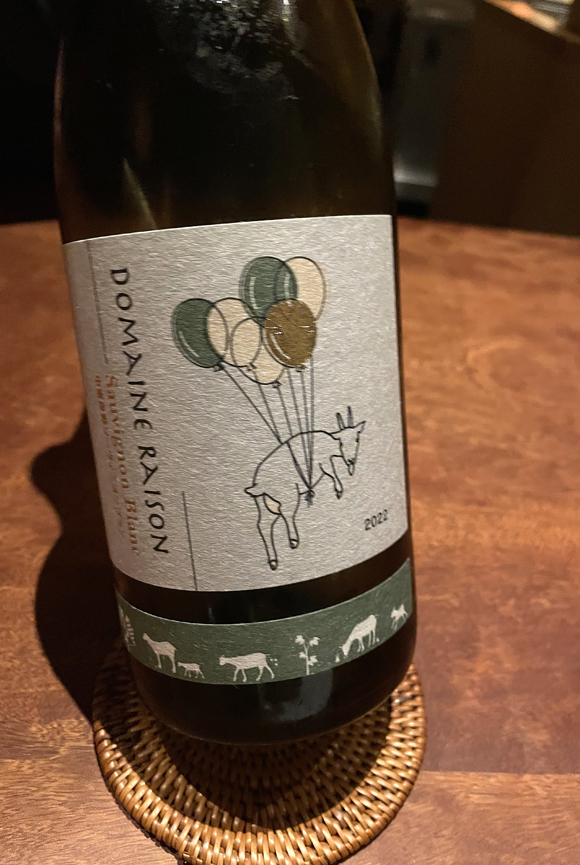

It accompanied wintermelon done like tarte tatin, all sweet and buttery tasting, along with julienned green papaya and pears; and a leafy green salad. A vivid green dressing of buttermilk, sake, and pine oil was centered in a bowl of smoking pine branches to evoke an evening campfire in the forest. You’re told to mix a little of everything on your fork to get a perfect mouthful of sweet, savory, and vegetative.
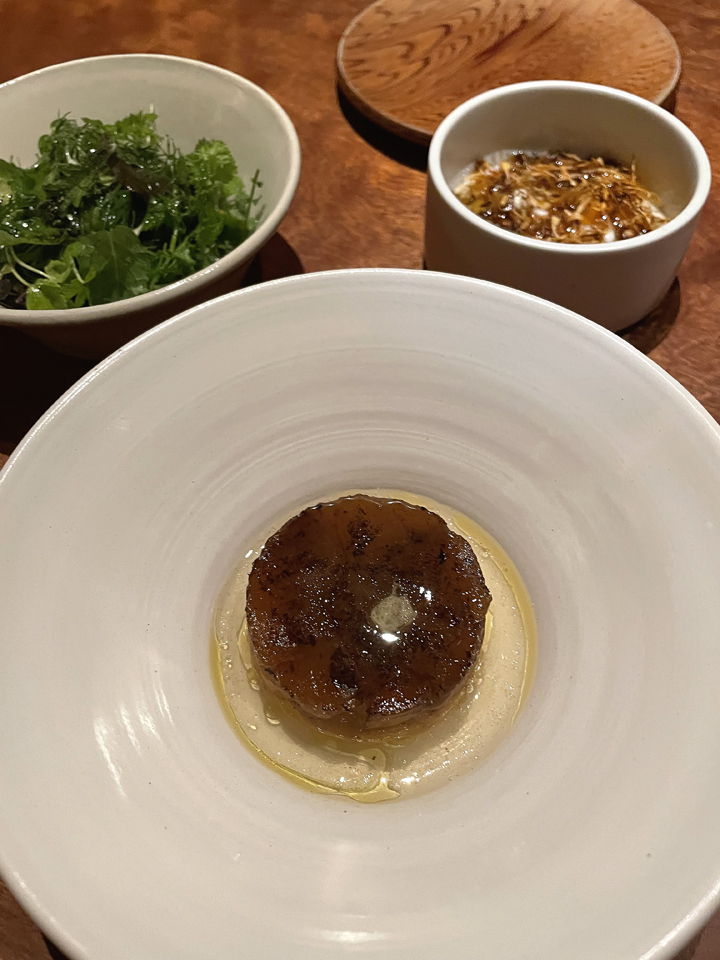
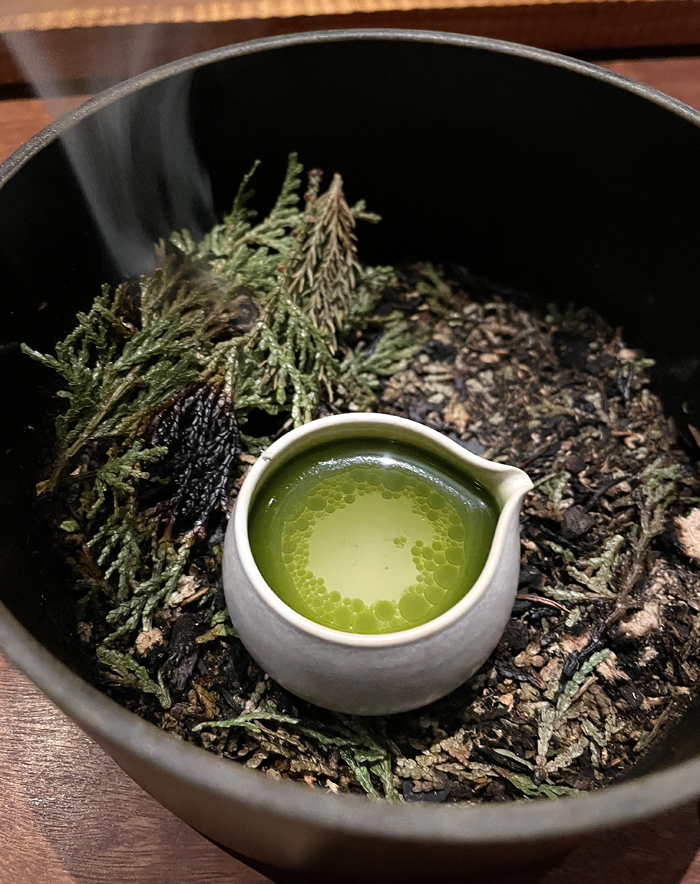
As you segue into the entree portion of the meal, your server will come by to ask if you’d prefer a regular portion or a smaller portion of the next few dishes, though, I don’t think you’ll necessarily get a discounted price if you opt for the more petite portion. My husband went with the regular while I went for the smaller, which is what you see pictured here.
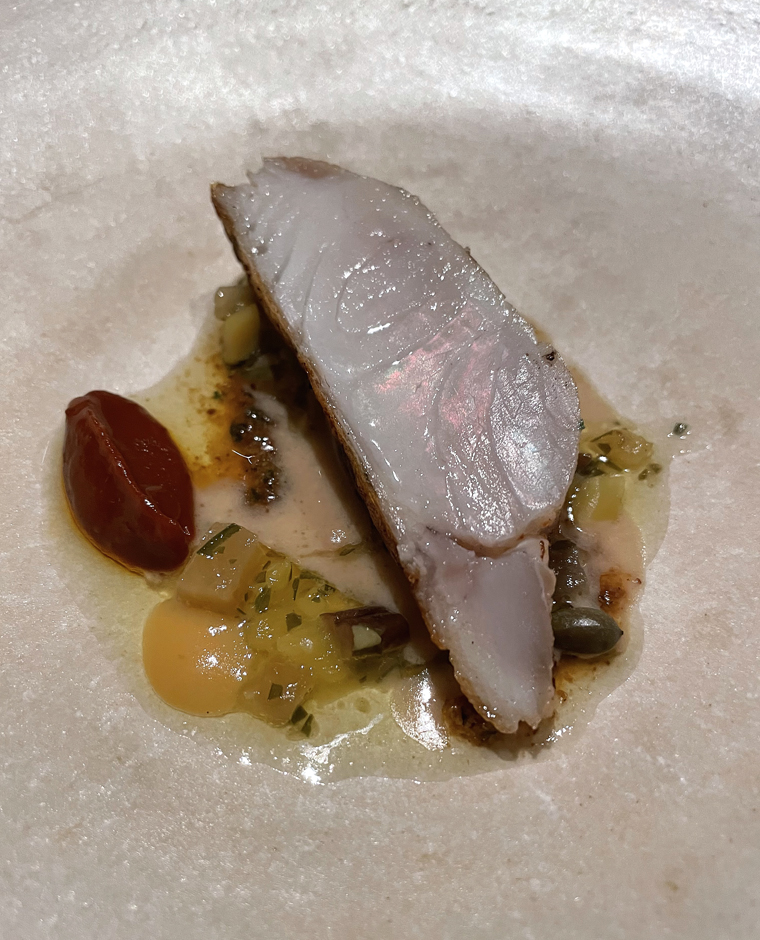

Okinawan parrotfish arrives next, a silky, iridescent fillet finished with tomato sauce seasoned with garlic and yuzu oil, and garnished with ginko nuts. With slivers of green olives, it’s quite Mediterranean tasting.
A rosy slab of duck breast follows, napped in both a sake lees sauce and a watercress sauce. The taste reminded me of not Peking duck, but Chinese roast duck from a Chinatown deli with its wonderful savory plum taste almost like that of a less cloying hoisin sauce.
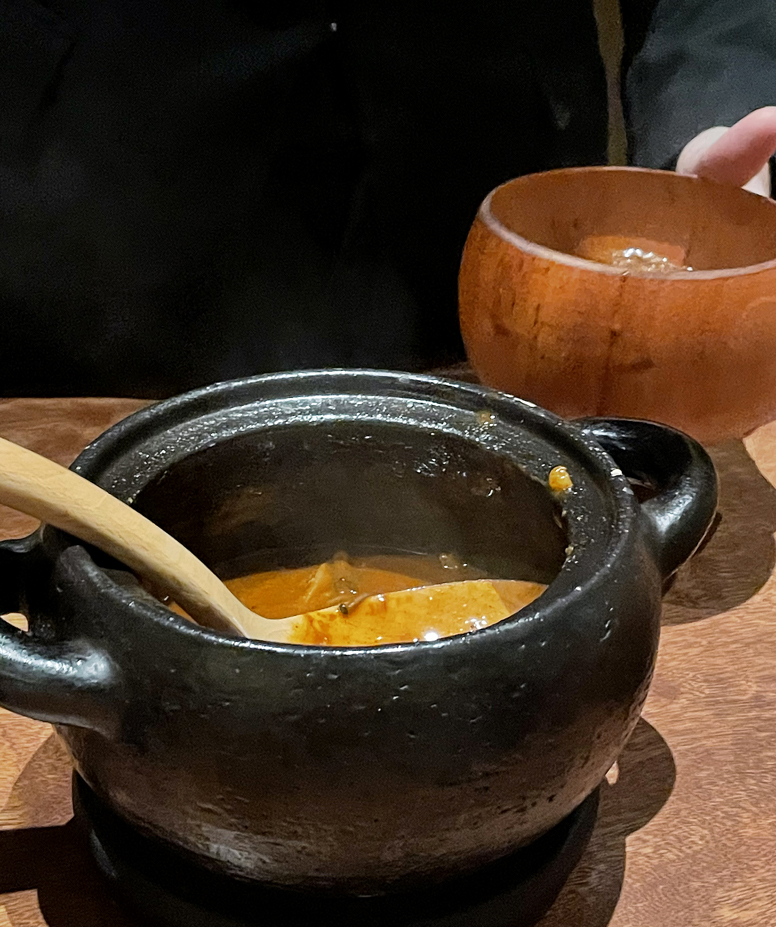
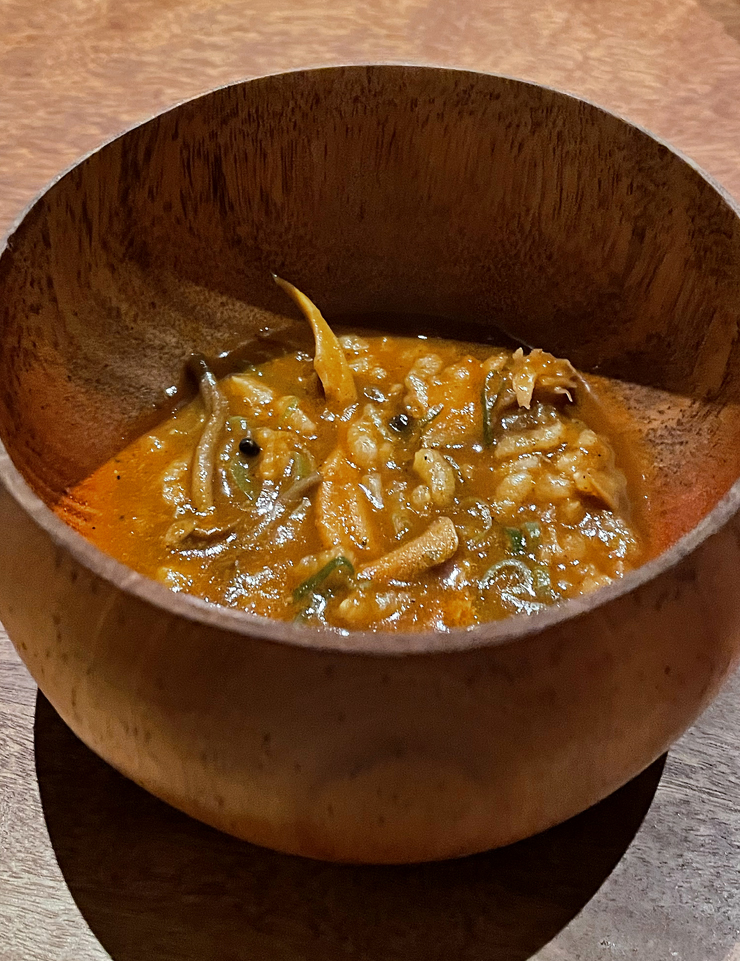
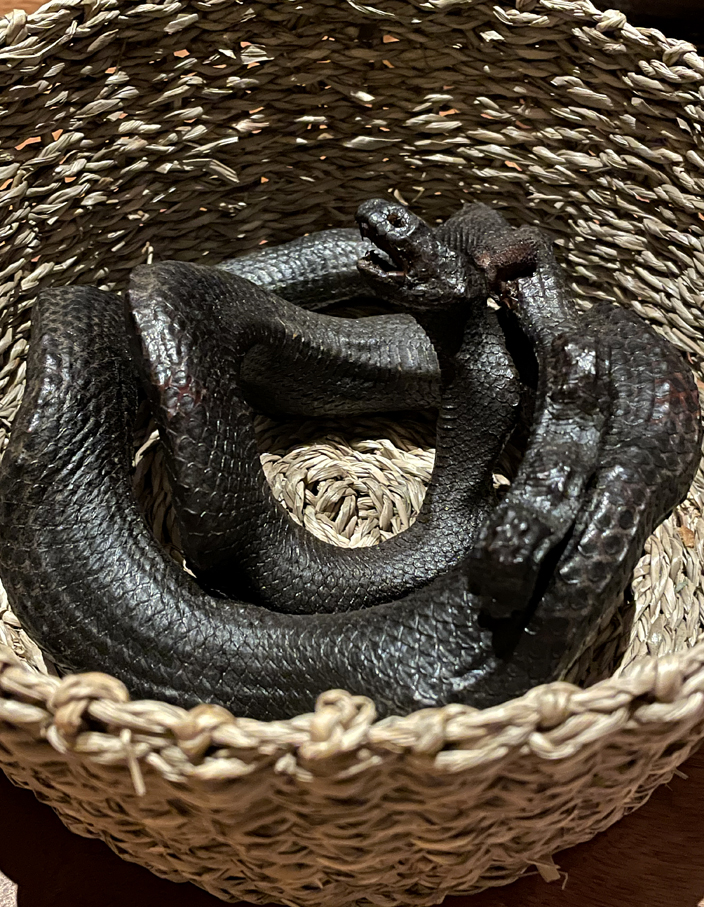
Rice porridge or rice mixed with green tea might come near the conclusion of a traditional Japanese meal. With Koke’s Spanish leanings, there is arroz caldoso instead. The brothy rice is made with tomatoes and saffron, and something surprising — black sea snake, which a server will come by to show you. Thankfully, this one is not alive, but dried. It’s savory, peppery, and very oceanic tasting, and you can have seconds, if you like.
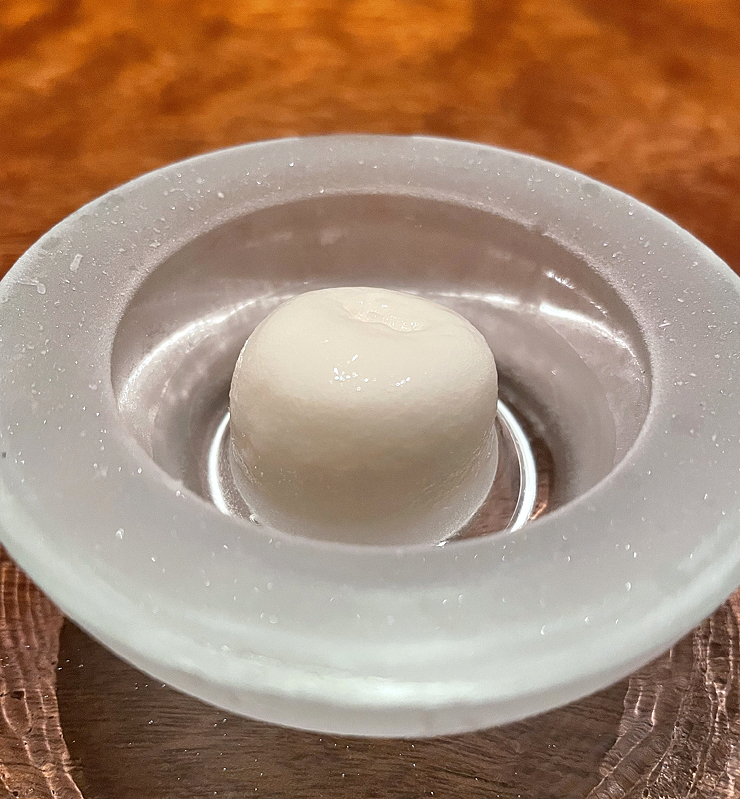
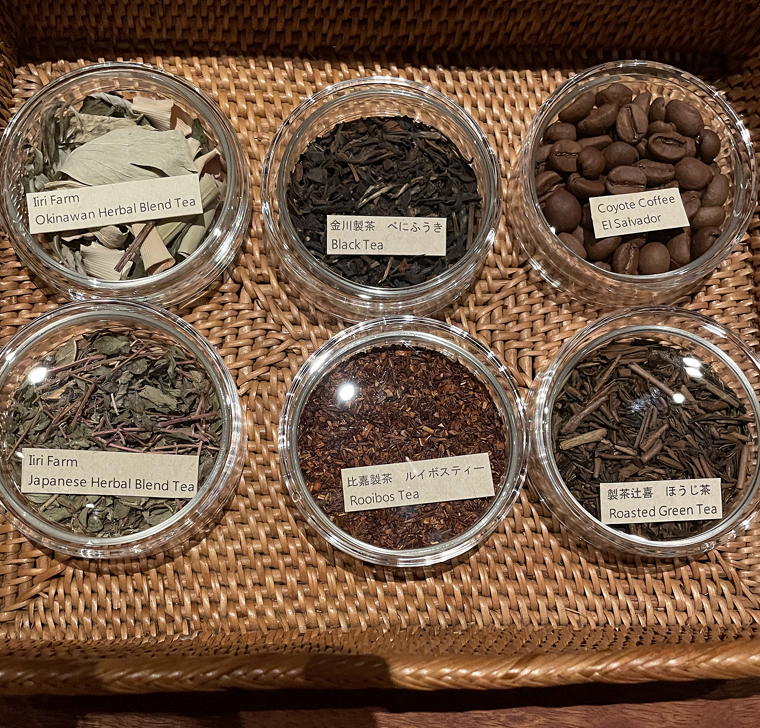

To ease from savory into dessert, there is beer mousse, soft and jiggly, that’s made with sugar cane and coconut. It has a gentle sweetness and a hoppy, yeasty finish.
Your choice of tea is offered that the staff will steep before presenting to you in a glass cup. I went with the herbal blend while my husband chose the Okinawan mint.
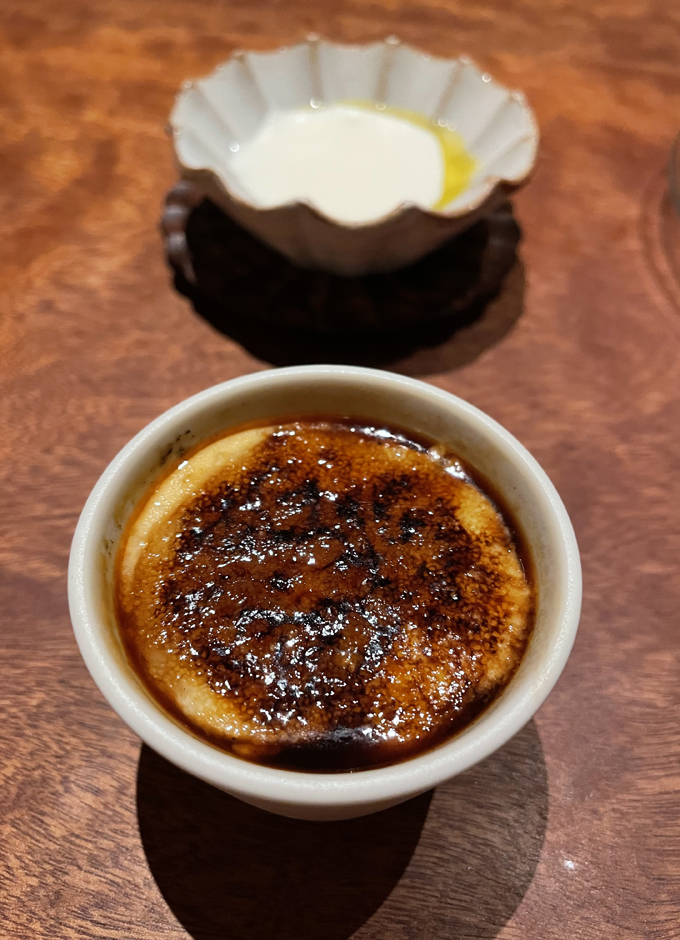
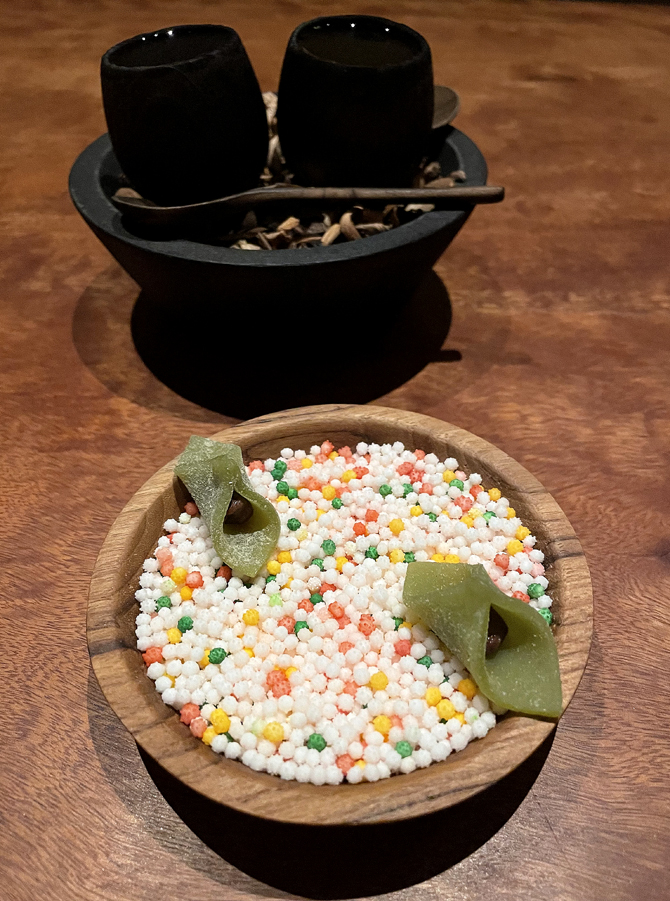
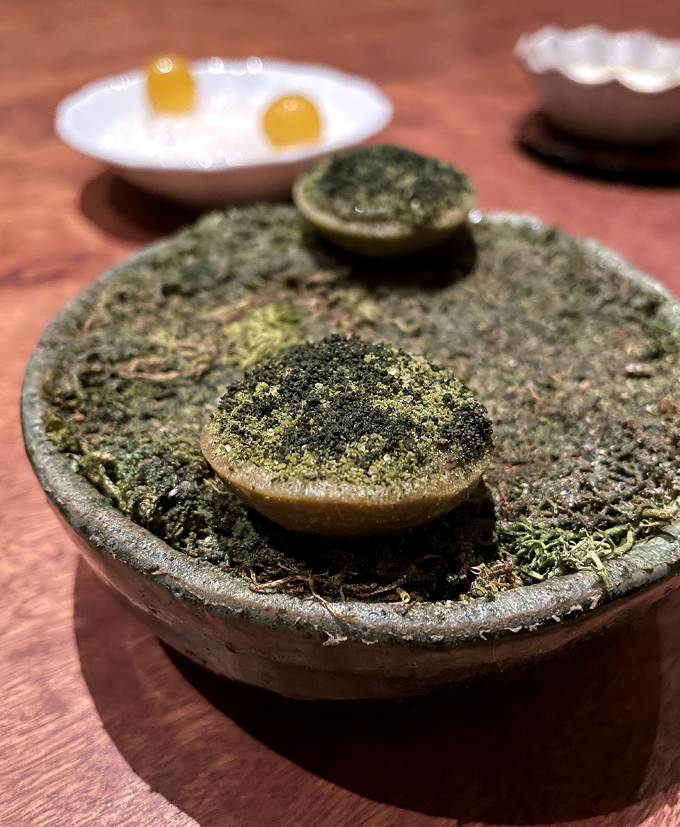
For the finale, there is a flourish of sweets: a luscious pineapple mousse with a crackly creme brulee-like top; a shell ginger ice cream drizzled with olive oil that I only wished had a more aggressive ginger taste; tiny green tea mochi with chocolate filling; smooth, velvety pudding topped with jasmine caramel; green tea and coffee tarts; and zingy, bouncy yuzu gelees.
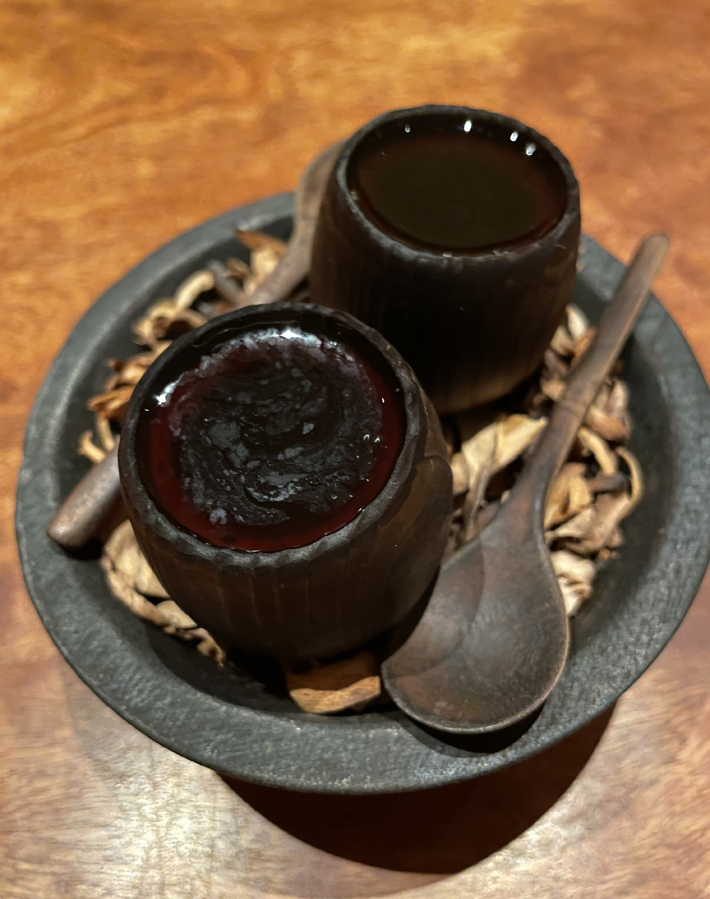
When you’re ready to leave, Chef Nakamura will come out from the kitchen to personally thank you and bid adieu on an evening that was far from traditional, but thoroughly memorable.
